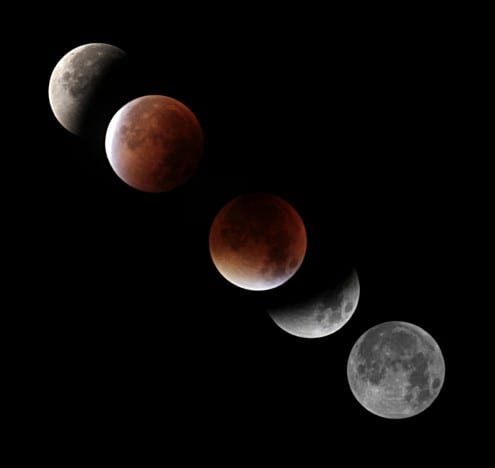Total eclipse of the Moon
By Oli Usher, on 28 September 2015
Last night saw both a supermoon (the Moon’s closest approach to Earth, in which it appears about 14% bigger than it does at its most distant), and a lunar eclipse, in which the full Moon passes through the Earth’s shadow.
During a lunar eclipse, the disc of the Moon progressively goes from bright white to a deep red: when in the Earth’s shadow, the only light illuminating its surface is the light that is bent through Earth’s atmosphere. This light – effectively, the light of all the sunrises and sunsets on Earth – is red because blue light is scattered in Earth’s atmosphere.
This sequence of photos was produced by Theo Schlichter, Computing and Instrumentation Officer at UCL’s observatory, using a Canon EOS450D camera and a 200mm lens. The composite was produced by Dr Steve Fossey.
 Close
Close



